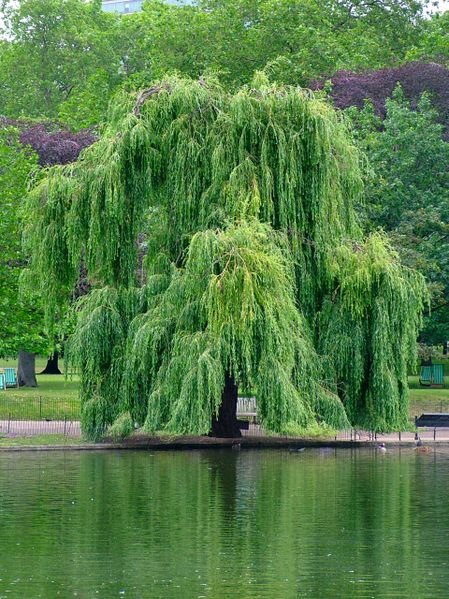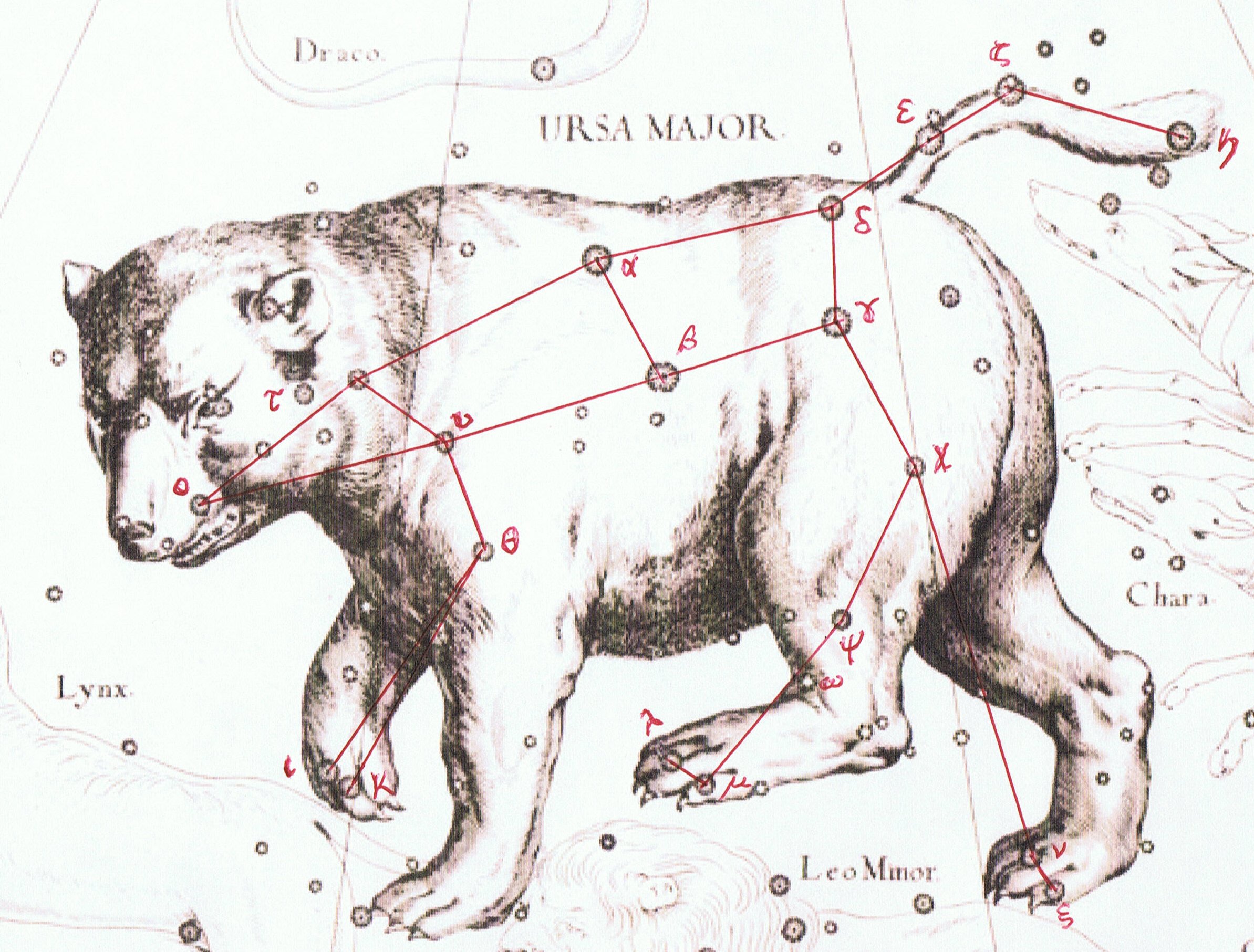The Tree which on Easter Island did not exist other than in memory maybe was the coconut tree, because the sign at left in Ka3-16 was consistently named niu by Metoro:
The meaning of the picture in Ka3-16 with niu at left and the limb with 5 feathers at right could in some way be the same as tagata with toki at right in Ka2-11, because the preceding Rei glyphs are identical. Coconut trees thrive close to water, and so does the Willow:
The 6th Arabic manzil Alhena was beginning here, in Gregorian day 'July 22 (π) and evidently the threshold between 'sea' and 'land'. The name Al Hena sounds as if it was related to henua. ... Riccioli called it Elhenaat, but Alhena is now generally given to it, from Al Han'ah, the 4th manzil, γ, μ, ν, η, and ξ, in the feet of the Twins. This word, usually translated a Brand, or Mark, on the right side of a camel's or horse's neck, was defined by Al Bīrūnī as Winding, as though the stars of this station were winding around each other, or curving from the central star; and they were Al Nuhātai, the dual form of Al Nuhāt, a Camel's Hump, itself a curved line. Some Arabic authority found in them, with χ¹ and χ² of Orion, the Bow with which the Hunter is shooting at the Lion ... According to Manuscript E the canoe of the explorers sailed in a curve (a sweep) when reaching the island:
Robert Graves has much to say about the Willow in his great work The White Goddess. It is impossible to here include a synopsis. But we need a tiny fragment (motu): "Another name for the Goddess of the Mill was Artemis Calliste, or Callisto ('Most Beautiful'), to whom the she-bear was sacred in Arcadia; and in Athens at the festival of Artemis Brauronia, a girl of ten years old and a girl of five, dressed in saffron-yellow robes in honour of the moon, played the part of sacred bears. The Great She-bear and Little She-bear are still the names of the two constellations that turn the mill around. In Greek the Great Bear Callisto was also called Helice, which means both 'that which turns' and 'willow-branch' - a reminder that the willow was sacred to the same Goddess." A curve indicates change and the changes from one season to the next is evidently due to hard work done close to the pole. There the 'Mill' is made to turn: ... The sense of top lies in the fact that the bud end of a coconut shell is used for spinning, both in the sport of children and as a means of applying to island life the practical side of the doctrine of chances. I think it is no coincidence the first Ursa star appears here, where a great turnover is due (always a time of hazard):
|






